Health
Top 10 Gluten-Free Baking Essentials to Elevate Your Home Bakes
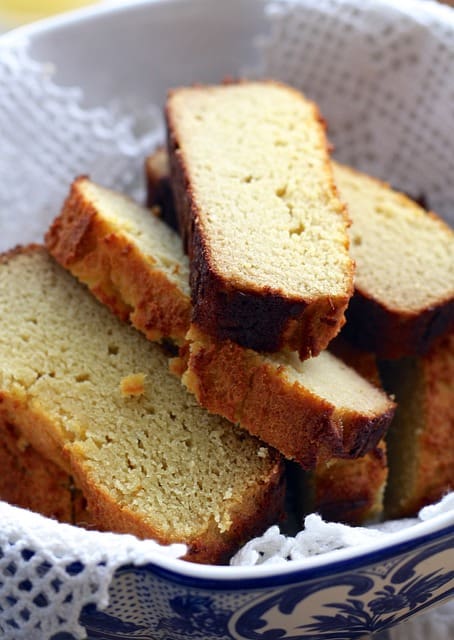

In the world of gluten-free baking, having the right ingredients can make all the difference in achieving the perfect texture and flavor in your homemade treats. Whether you’re new to gluten-free baking or a seasoned pro, having the right essentials in your pantry can elevate your creations to new heights.
From versatile almond flour to the binding power of xanthan gum, these top 10 gluten-free baking essentials are the key to unlocking a world of delicious possibilities in your home kitchen.
Key Takeaways
- Alternative flours like almond flour, coconut flour, brown rice flour, sorghum flour, buckwheat flour, and quinoa flour are essential for gluten-free baking.
- Coconut flour is a particularly beneficial option as it is high in fiber, has a low glycemic index, and is rich in protein, iron, and healthy fats.
- When baking with coconut flour, it is important to use it in combination with other gluten-free flours, increase liquid content, and add extra eggs or binding agents to prevent crumbliness.
- Psyllium husk is another important ingredient that improves texture and elasticity in baked goods, enhances moisture retention, and adds nutritional value to gluten-free home bakes. It can be used in bread and pastry recipes for improved texture, and adjusting liquid content is necessary when incorporating it.
Almond Flour
Almond flour is a versatile and popular gluten-free alternative to traditional wheat flour in baking and cooking. Derived from blanched almonds, this nutrient-dense ingredient offers a subtle nutty flavor and a moist texture to a variety of dishes. It is an excellent choice for individuals seeking a low-carb or paleo-friendly option.
The high protein and healthy fat content in almond flour not only provide a nutritional boost but also contribute to its unique baking properties. In gluten-free baking, almond flour serves as a staple ingredient, imparting a tender crumb to cookies, cakes, and quick breads. Its ability to retain moisture makes it especially valuable in producing moist and dense baked goods.
Furthermore, almond flour can be used as a coating for meats or as a thickener for sauces and soups, adding a delightful richness to savory dishes. Moreover, almond flour is a versatile ingredient in grain-free cooking, offering a wealth of recipe options for those seeking dietary freedom. From almond flour pancakes to almond-crusted chicken, the culinary possibilities are vast, making it a must-have for anyone looking to explore gluten-free and paleo-inspired cuisine.


Coconut Flour
Coconut flour is a versatile and nutritious alternative to traditional wheat flour, making it a popular choice for gluten-free baking. It offers a range of benefits, including high fiber content and a low glycemic index, making it suitable for those following a low-carb or diabetic-friendly diet.
When baking with coconut flour, it’s important to note that it absorbs more liquid than other flours, requiring adjustments in recipes to achieve the desired texture and consistency.
Benefits of Coconut Flour
When seeking a versatile and nutritious alternative for traditional wheat flour in gluten-free baking, many bakers turn to coconut flour for its numerous benefits.
Coconut flour offers several advantages that make it a valuable addition to any gluten-free pantry:
- High Fiber Content: Coconut flour is rich in dietary fiber, which can promote digestive health and help maintain a feeling of fullness, making it a great choice for those seeking a well-rounded diet.
- Low Glycemic Index: With a low glycemic index, coconut flour can help regulate blood sugar levels, making it a suitable option for individuals who need to manage their blood sugar levels.
- Rich in Nutrients: Coconut flour is a good source of protein, iron, and healthy fats, providing essential nutrients for overall well-being and energy.
These benefits make coconut flour an excellent choice for anyone looking to elevate their gluten-free baking while prioritizing health and nutrition.
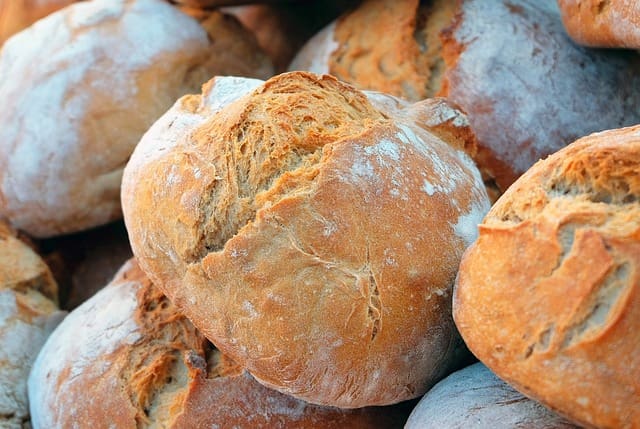

Baking With Coconut Flour
Given the numerous benefits of coconut flour, it is important to understand how to effectively incorporate this versatile ingredient into gluten-free baking for optimal results.
When baking with coconut flour, it’s crucial to note that it behaves differently from wheat flour. Due to its high absorbency, it’s recommended to use it in combination with other gluten-free flours and to increase the liquid content in the recipe. A general rule is to use an equal ratio of liquid to coconut flour or slightly increase the liquid.
Additionally, it’s advisable to add extra eggs or a binding agent to prevent the baked goods from becoming too crumbly. Coconut flour also benefits from a longer mixing time to allow it to fully absorb the liquids.
Coconut Flour Recipes
Incorporating coconut flour into gluten-free recipes can add a unique flavor and nutritional benefits to baked goods. This versatile ingredient is not only gluten-free but also high in fiber and protein, making it an excellent choice for those seeking healthier alternatives in their baking.
Here are three delightful coconut flour recipes to elevate your gluten-free baking:
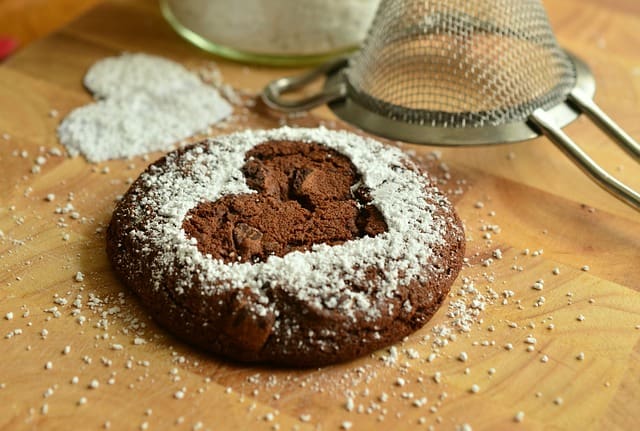

- Coconut Flour Pancakes: Light and fluffy pancakes made with coconut flour are a delicious way to start your day. They are not only gluten-free but also provide a delightful hint of coconut flavor.
- Coconut Flour Chocolate Chip Cookies: Indulge in the perfect balance of chewy and crispy cookies made with coconut flour. These cookies are a delightful gluten-free treat for any occasion.
- Coconut Flour Banana Bread: Moist and flavorful, coconut flour banana bread offers a tropical twist to a classic recipe. It’s a delightful way to enjoy a gluten-free snack or dessert.
Xanthan Gum
Xanthan gum is a crucial ingredient in gluten-free baking. It provides the necessary binding and structural support often missing in recipes without gluten. Its ability to mimic the elasticity and texture of gluten makes it an essential component in creating baked goods with a desirable crumb structure and improved moisture retention.
Understanding the benefits of using xanthan gum can greatly enhance the quality and consistency of gluten-free baked goods.
Binding Agent Benefits
When seeking to enhance the texture and structure of gluten-free baked goods, bakers often turn to xanthan gum as a crucial binding agent. Xanthan gum offers several benefits that are particularly valuable in gluten-free baking:
- Improved Texture: Xanthan gum helps mimic the elasticity and texture that gluten provides in traditional baked goods, resulting in a more enjoyable eating experience.
- Enhanced Stability: It assists in preventing gluten-free baked goods from crumbling or falling apart, providing a stable and pleasing final product.
- Reduced Grittiness: Xanthan gum works to eliminate the gritty texture often associated with gluten-free flours, ensuring a smoother and more palatable mouthfeel.
Baking Texture Improvement
To enhance the texture of gluten-free baked goods, bakers often rely on xanthan gum as a crucial ingredient in improving the overall baking quality. Xanthan gum is a polysaccharide that acts as a binding agent, emulsifier, and most importantly, as a texture enhancer in gluten-free baking.
It is instrumental in providing structure and elasticity to gluten-free baked goods, which are otherwise challenging to achieve due to the absence of gluten. By adding xanthan gum to recipes, bakers can attain the desired moistness, tenderness, and softness in their gluten-free creations.


This ingredient helps prevent the crumbly and dry texture that is often associated with gluten-free baked goods, allowing individuals following a gluten-free diet to enjoy the same delightful textures and flavors as traditional baked goods.
Psyllium Husk
In gluten-free baking, incorporating psyllium husk enhances the texture and structure of baked goods, providing a valuable alternative to traditional binding agents. Psyllium husk is a soluble fiber derived from the seeds of the Plantago ovata plant and is known for its impressive binding properties, making it an essential ingredient in gluten-free baking.
Here are three reasons why psyllium husk is a must-have for elevating your gluten-free home bakes:
- Improved Texture: Psyllium husk helps to mimic the elasticity and texture of gluten, resulting in softer and more cohesive baked goods. It is particularly beneficial in bread and pastry recipes, where it aids in creating a light and airy crumb structure.
- Enhanced Moisture Retention: When used in baking, psyllium husk absorbs moisture and helps to retain it, preventing gluten-free baked goods from becoming dry and crumbly. This ensures that your creations stay fresh and enjoyable for longer periods.
- Nutritional Benefits: Aside from its functional properties, psyllium husk is also a good source of fiber, which can contribute to a balanced diet and promote digestive health.
Incorporating psyllium husk into your gluten-free baking repertoire can significantly improve the quality and taste of your homemade treats, offering a sense of freedom and creativity in the kitchen.
Tapioca Starch
Tapioca starch is a versatile thickening agent that is commonly used in gluten-free baking. It enhances the texture and chewiness of baked goods, making it a popular choice for those seeking a gluten-free alternative.
With its ability to mimic the properties of gluten, tapioca starch is a valuable ingredient in creating delicious and satisfying gluten-free treats.
Versatile Thickening Agent
A key component in gluten-free baking, tapioca starch serves as a versatile thickening agent, enhancing the texture and structure of various baked goods. Its neutral flavor and ability to withstand high temperatures make it a popular choice for thickening sauces, soups, and gravies. In addition to its thickening properties, tapioca starch also contributes to the chewiness of baked goods like bread, muffins, and cookies.
When used in combination with other gluten-free flours, it helps mimic the elasticity and structure that gluten provides, resulting in lighter and fluffier baked goods. Its adaptability makes it an essential ingredient for those seeking the freedom to enjoy a wide variety of gluten-free treats without compromising on taste or texture.
- Neutral Flavor: Tapioca starch does not alter the taste of the baked goods, allowing the flavors of other ingredients to shine.
- Chewy Texture: It enhances the chewiness of baked goods, providing a satisfying texture.
- Elasticity and Structure: When combined with other gluten-free flours, it helps replicate the structure and elasticity that gluten provides, resulting in lighter and fluffier baked goods.
Enhances Texture and Chewiness
An indispensable component in gluten-free baking, tapioca starch not only serves as a versatile thickening agent but also plays a crucial role in enhancing the texture and chewiness of a wide array of baked goods.
Tapioca starch, derived from the cassava root, is prized for its ability to add a pleasing chewiness to baked goods, making it a valuable addition to gluten-free recipes. Its fine texture helps create a desirable crumb structure in bread, cakes, and cookies, mimicking the elasticity and chewiness typically provided by gluten.


When used in combination with other gluten-free flours and starches, tapioca starch can significantly improve the mouthfeel and overall texture of baked goods, ensuring that gluten-free treats are just as enjoyable and satisfying as their traditional counterparts.
Gluten-Free Alternative Option
Derived from the cassava root, tapioca starch is an essential gluten-free alternative option that plays a crucial role in enhancing the texture and chewiness of a wide array of baked goods. This versatile ingredient is a staple in gluten-free baking, providing a light and airy texture while also adding a delightful chewiness to bread, cookies, and cakes. Tapioca starch is also known for its ability to create a crispy crust on the outside of baked goods, adding an appealing contrast in texture. When used in combination with other gluten-free flours, tapioca starch helps mimic the elasticity of gluten, resulting in moist and tender baked goods that are indistinguishable from their gluten-containing counterparts.
Top 3 Benefits of Tapioca Starch:
- Enhanced Texture: Tapioca starch contributes to a pleasingly light and airy texture in baked goods.
- Chewy Consistency: It adds a delightful chewiness to bread, cookies, and cakes.
- Crispy Crust: Tapioca starch helps create a crispy crust on the outside of baked goods.
Gluten-Free Oats
When seeking gluten-free oats, it is important to ensure that they are certified gluten-free to avoid any potential cross-contamination. Oats are naturally gluten-free, but they are often processed in facilities that also handle wheat, barley, and rye, leading to the risk of cross-contamination. Certified gluten-free oats are produced and processed in dedicated gluten-free facilities, ensuring that they are safe for those with gluten sensitivities or celiac disease.
Gluten-free oats are a versatile ingredient that can elevate your gluten-free baking. They add a hearty, nutty flavor and a pleasant chewy texture to a wide range of baked goods. From classic oatmeal cookies and granola bars to oat flour used in pancakes, muffins, and bread, gluten-free oats offer a nutritious and delicious alternative to traditional wheat-based ingredients.
In addition to being a great source of fiber and nutrients, gluten-free oats are also known for their role in promoting heart health and aiding digestion. Their versatility and health benefits make them a valuable addition to any gluten-free pantry, allowing individuals to enjoy a wide variety of baked goods without compromising on taste, texture, or dietary restrictions.
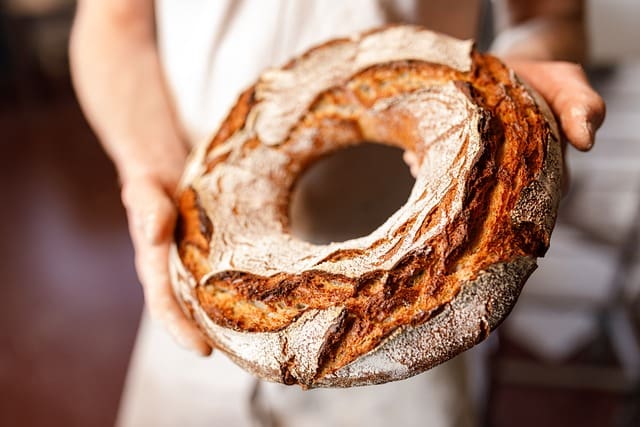

Brown Rice Flour
Having explored the benefits of gluten-free oats in elevating the quality of gluten-free baking, the focus now shifts to the versatility and nutritional value of brown rice flour in creating a wide array of gluten-free baked goods.
Brown rice flour is a staple in gluten-free baking due to its neutral flavor and ability to create a light and tender texture in baked goods. Here are three reasons why brown rice flour is an essential ingredient for gluten-free baking:
- Nutritional Benefits:
Brown rice flour is a whole grain flour that retains the nutritious bran and germ of the rice kernel. It is a good source of essential nutrients such as fiber, B vitamins, and minerals, making it a healthier choice compared to refined flours. - Versatility:
Brown rice flour can be used on its own or combined with other gluten-free flours to create a variety of baked goods, including bread, cakes, cookies, and pastries. Its versatility allows for experimentation and adaptation in different recipes. - Gluten-Free Option:
As a naturally gluten-free flour, brown rice flour provides an excellent alternative for individuals with gluten sensitivities or celiac disease, allowing them to enjoy a wide range of baked goods without compromising on taste or texture.
Sorghum Flour
A versatile and nutritious option for gluten-free baking, sorghum flour offers a unique flavor profile and beneficial properties for creating a variety of delicious baked goods.
This ancient whole grain flour is derived from sorghum, a gluten-free grain that is rich in fiber, protein, and antioxidants. Its slightly sweet and nutty taste adds depth to baked goods, making it a popular choice for gluten-free recipes.
Sorghum flour is also known for its ability to create a light and airy texture in baked goods, making it an ideal choice for cakes, cookies, and bread. Its nutritional profile, including essential vitamins and minerals like B vitamins, iron, and magnesium, adds to its appeal for health-conscious bakers.


Furthermore, sorghum flour is a great option for those with dietary restrictions, as it is not only gluten-free but also free from common allergens.
With its versatility and nutritional benefits, sorghum flour is a valuable ingredient to elevate the quality of gluten-free home baking.
Arrowroot Powder
Serving as another essential ingredient for gluten-free baking, arrowroot powder offers versatility and texture-enhancing properties that complement the nutritional benefits and flavor profile of sorghum flour. Derived from the tropical South American plant Maranta arundinacea, arrowroot powder is a gluten-free, grain-free, and paleo-friendly thickening agent that serves as an excellent alternative to traditional wheat-based thickeners.
Here are three reasons why arrowroot powder is a must-have for gluten-free baking:
- Texture Enhancement: Arrowroot powder has the ability to add lightness and fluffiness to baked goods, making it an ideal ingredient for creating soft and tender textures in gluten-free cakes, cookies, and bread.
- Nutritional Benefits: Rich in potassium, iron, and B-vitamins, arrowroot powder offers a nutritional boost to gluten-free recipes, contributing to overall health and wellness.
- Digestive Friendly: Known for its gentle effect on the digestive system, arrowroot powder is well-tolerated by individuals with sensitive stomachs, making it a preferred choice for those seeking digestive freedom in their diet.
Buckwheat Flour
Buckwheat flour, a versatile and nutritious gluten-free alternative, adds a distinctive nutty flavor and hearty texture to a wide range of baked goods. This flour is derived from ground buckwheat groats, which are not a type of wheat but rather a seed related to rhubarb.


Buckwheat flour is an excellent choice for those seeking gluten-free options, as it is rich in nutrients such as fiber, protein, and essential minerals like magnesium and manganese. Its unique flavor profile makes it a popular choice for pancakes, crepes, muffins, and bread, adding depth and complexity to the taste of baked treats.
Due to its high protein content, it also contributes to the structural integrity of baked goods, making it especially suitable for use in combination with other gluten-free flours. Additionally, its nutritional benefits make it an attractive option for individuals looking to enhance the health profile of their baked creations.
For those seeking freedom in their dietary choices, buckwheat flour is a valuable and flavorful addition to the gluten-free baking pantry.
Frequently Asked Questions
What Are the Best Substitutes for Almond Flour in Gluten-Free Baking?
In gluten-free baking, the best substitutes for almond flour are coconut flour, hazelnut flour, and sunflower seed flour. These alternatives offer similar textures and flavors, allowing for seamless incorporation into a wide range of recipes.
Can Coconut Flour Be Used as a 1:1 Substitute for Regular Flour in Baking Recipes?
Coconut flour is not a 1:1 substitute for regular flour due to its high absorbency. It requires more liquid and eggs for binding. However, when used correctly, it can yield delicious gluten-free baked goods with a unique, slightly sweet flavor.
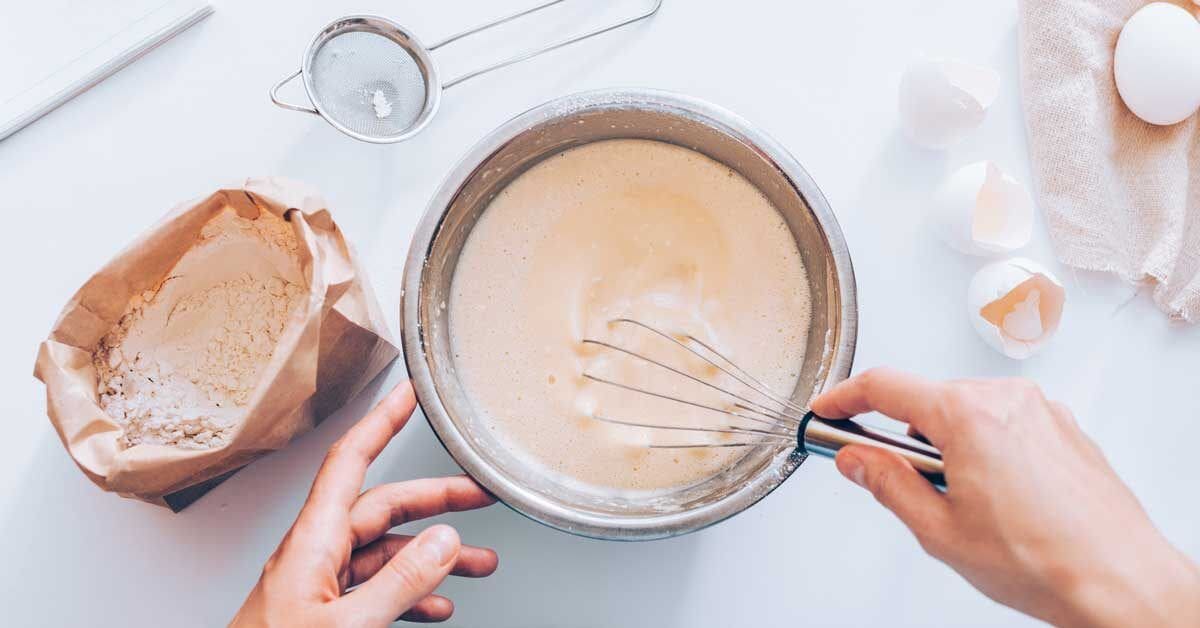

How Does Xanthan Gum Differ From Other Gluten-Free Binding Agents Like Psyllium Husk?
Xanthan gum is a polysaccharide that acts as a powerful binding agent in gluten-free baking, providing elasticity and structure. In contrast, psyllium husk is a fiber that offers similar binding properties, but may impart a different texture and flavor to baked goods.
Are There Any Potential Health Concerns or Side Effects of Consuming Tapioca Starch Regularly?
Consuming tapioca starch regularly may lead to potential health concerns such as blood sugar spikes due to its high carbohydrate content. It’s essential to moderate intake and balance it with other nutrient-rich foods for a well-rounded diet.
What Are Some Creative Ways to Incorporate Sorghum Flour Into Gluten-Free Baking Recipes?
Sorghum flour can be creatively used in gluten-free baking recipes to add a nutty flavor and a tender texture. It works well in bread, muffins, and cookies, offering a nutritious alternative. Experiment with blending it with other gluten-free flours for optimal results.


Hi, I’m Kyle Rivera, a news journalist and blog editor with the Daily Evening News. A TCU alum with a flair for storytelling, I spend my days uncovering impactful stories and my evenings exploring the realms of yoga, cycling, and whimsically bad poetry.
Travel is my escape; I’ve trekked from Tokyo’s neon lights to Iceland’s tranquil vistas. But no journey is complete without Mogli, my Golden Retriever, who’s redefining his breed standards in the most charming ways.
I love connecting with fellow travelers, yogis, cyclists, and anyone who enjoys a laugh at my poetic attempts. If you’re into stories that inspire, travel escapades, or just want to see what Mogli and I are up to, I’d love to hear from you on Instagram or Facebook. Let’s share tales and tips from around the globe!

